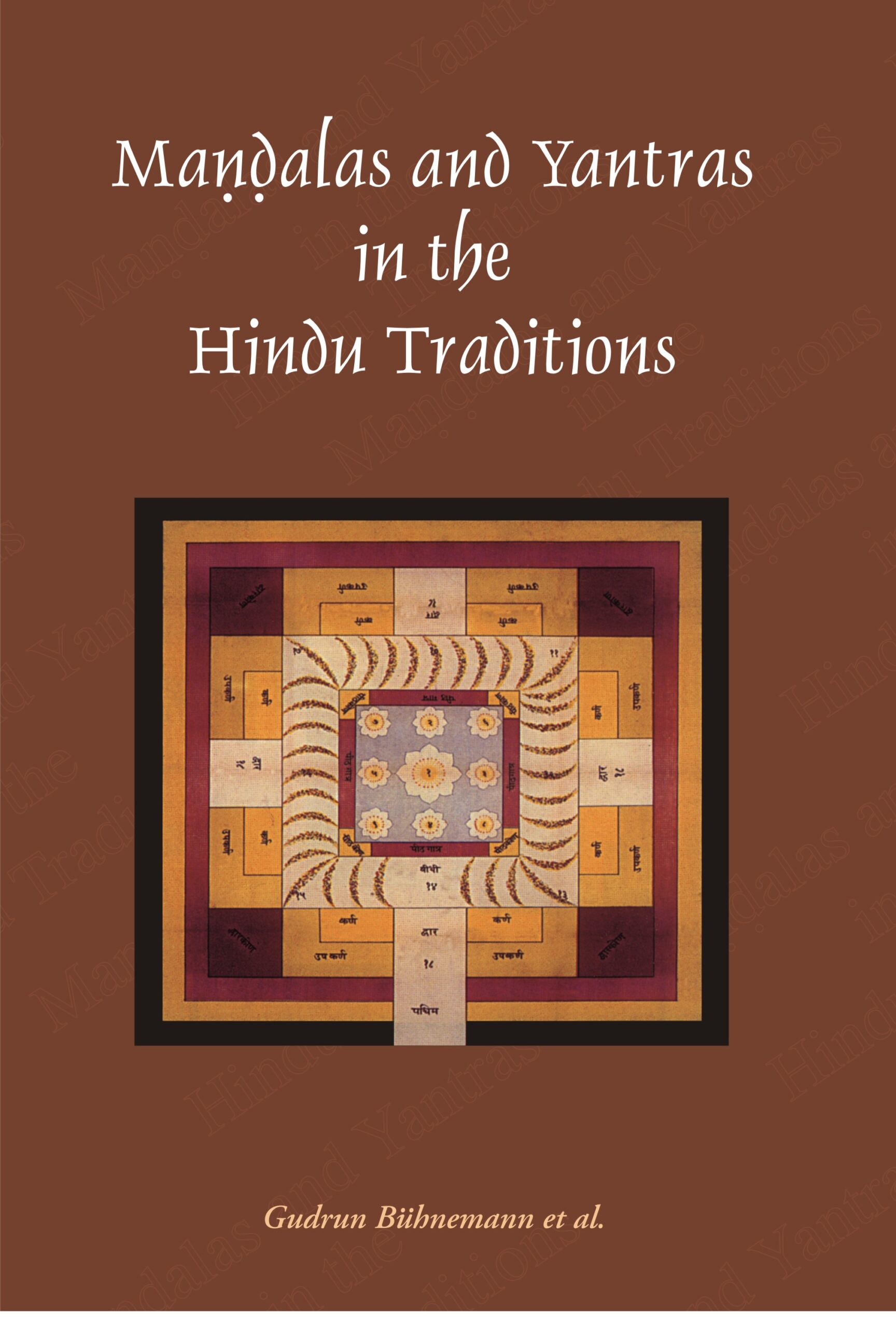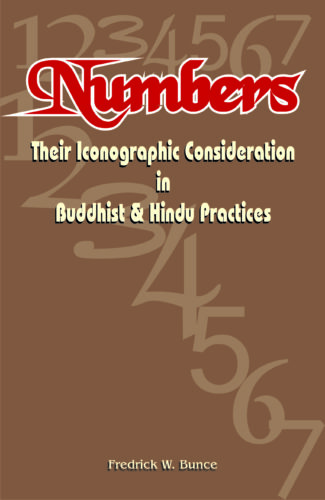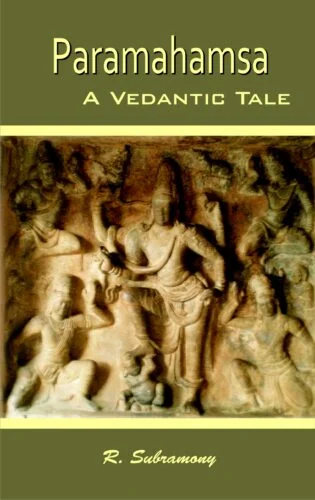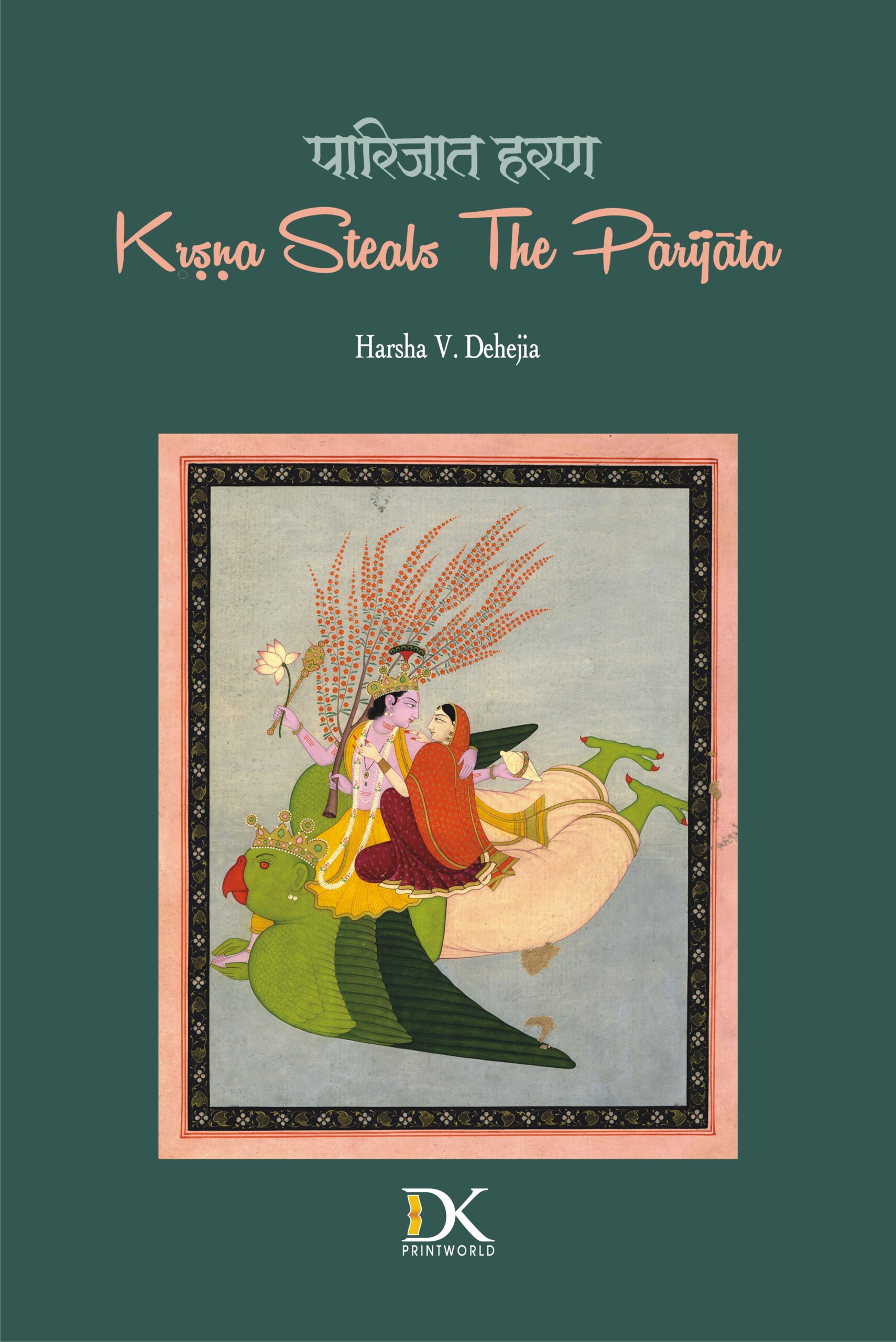Showing 61–72 of 142 results

In recent years mandalas have attracted much interest and the main focus of such interest has been directed towards Tibetan mandalas. But mandalas are found across a wide spectrum of South Asian religious traditions as well including those of the Hindus and Jains. Hindu mandalas and yantras have hardly been researched. This book attempts to fill this gap.
Mandalas and Yantras are used in rites of worship in a wide range of Hindu, Buddhist and Jaina religious traditions. This volume has scholarly articles that deal with the little-researched subject of mandalas and yantras in specific Hindu traditions-Smarta, Pancaratra, Shaiva and Shakta traditions. The articles discuss mandala-like arrangements and the navagrahamandala in the ritual practices of Smarta Brahmins in Maharashtra. Use of mantras and yantras in the Vaishnava Pancaratra tradition is studied on the basis of passages from the Samhitas. They concentrate on the Siddhanta school, pre-11th century Shaiva Mandalas expressing the link between branches of Shaivism and between Shaiva and non-Shaiva groups, and description of use of mandalas in Abhinavaguptas Tantraloka. The shricakra is explored as a cosmic than a ritual diagram which has immense religious/spiritual significance. A slightly different attempt examines application of vastumandala, as described in Varahamihiras Brihatsamhita, in temple architecture. Parallels are drawn between the rituals taken up here and others like Buddhist tantric initiation rites. The writings consult many religious texts including the Sharadatilaka, the 11th-century Yoginihridaya and the Svacchandatantra to understand mandala structure and rituals. A highlight of the volume is the inclusion of numerous reproductions of mandala designs and other drawings and extensive notes. The volume will be useful for Indologists studying Hindu religious traditions, particularly mystical rituals and rites of Vaishnava, Shaiva and Shakta traditions.

The 24,000 verses long Manthanabhairavatantra is the most important and extensive Tantra dedicated to the goddess Kubjika who is exclusively worshipped in the Kathmandu Valley. The section, Kumarikakhanda, offered here in 14 volumes, presents Kubjikas unique historical importance in the extraordinary richness of the inner, spiritual dimensions of her cult.
The Manthanabhairavatantra is about 24,000 verses long and is divided into three sections (khanda). The one edited and translated here is the Kumarikakhanda. Along with the Kubjikamata, the Manthanabhairavatantra is the most important and extensive Tantra dedicated to the worship of the goddess Kubjika. Although originally an Indian goddess, Kubjika is almost exclusively worshipped in the Kathmandu Valley, where her cult has been kept scrupulously secret by Newar initiates for centuries. Almost all the manuscripts of her Tantras and related literature have been found there.
Kubjika is a powerful development of Malini, the principal goddess of the Trika Tantras and Kali of the Kashmiri Krama tradition. Her cult belongs to a chain of early Kaula systems that culminate with that of the goddess Tripura and so sheds considerable light on them. Kubjikas unique historical importance is mirrored in the extraordinary richness of the inner, spiritual dimensions of her cult. These are explored in detail in the introduction to the edition and translation of the text with extensive references from mostly unpublished Kubjika Tantras and those of related schools.
The work took close to two decades to produce. In this time numerous working editions of unpublished Tantras and related texts were prepared by the author with the help of a team of five trained assistants.

This book is a dictionary of mudras in Hindu and Buddhist religious practices that lists various mudras and contains detailed and revealing notes about them. It scrutinizes the work done by a number of scholars to throw further light on the subject.
Mudras occupy an important place in Buddhist and Hindu religious practices as these signify special meanings, associated with specific divinities and rites, which cannot be represented any other way. This book is a dictionary of mudras in Hindu and Buddhist religious practices that lists the various mudras deity-centred, rite-centred, yogic-centred, and so on illustrating each with a simple drawing drawn generally from the perspective of one holding the mudra. It contains detailed notes that give numerous references to literary and other sources that reveal a lot about the mudras their descriptions in the texts, rites associated with the mudras in the texts as well as the varied interpretations of a number of mudras in the different texts. The book also has an introduction on Hindu and Buddhist mudras that goes into iconographic features associated with deities along with the technical descriptions and the subcategories and further divisions into which mudras are arranged. It scrutinises the work done by a number of scholars on the subject to throw further light on the subject. The volume will prove indispensable to all students and scholars who are engaged in study of Hindu and Buddhist religious traditions and practices.

This book explores the rich history, architecture, and spiritual significance of Chidambaram, the sacred birthplace of Nataraja. With 150+ images, it delves into its artistic, philosophical, and mystical essence.
“Chidambaram is a place of great antiquity which has been revered as one of the holiest sites in India for millennia. It is widely recognised as the birth place of Nataraja – King of Dancers an iconic and highly recognisable form of divinity in the Indian culture and tradition. Beyond being a mere religious symbol the imagery of Nataraja contains many layers of deep and subtle meaning.
This book is an exploration of these concepts and offers a glimpse of the many facets of the Chidambaram temple. This publication has been carefully curated with passion and devotion and offers a visual and stimulating journey of Chidambaram through a selection of over 150 high quality pictures and art work. It also contains literary snippets, short narratives of its exotic history and architecture, along with intriguing scientific, philosophical and mystical interpretations of this legendary temple.
Whether you are an art aficionado or someone interested in history, mythology, or science and spirituality, there is something in this book for you.”

This bilingual volume talks about the varied problems of philosophy in terms of definition, philosophical thinking, and the relation between thought and language. Problems that confront to a reflective mind need to be analysed, clarified and resolved. The book fulfils that task.
“Nature of Philosophy is a bilingual volume in English and Hindi. It talks about the varied problems of philosophy in terms of definition, philosophical thinking, and the relation between philosophy and language. Akin to any other discipline, in philosophy too, problems concerning it need to be analysed, clarified and resolved for a proper understanding and, it is the ultimate goal of this book. Herein, problems are made clear by analysis, questioning and critical method. The clarity thus achieved prompts us for philosophical reflection to the extent of removal of the problem and a discriminate understanding of the concept. It emphatically states that since philosophical problems are the objects of reflection, philosophical reflections aim at conceptual clarity by analysis, interpretation and wisdom. The question of any sort of risk against philosophy does not hold any merit. It is because philosophy fulfils human aspirations and truth of reasoning to confront with and reflect on problems to remove them. This book offers a thumbnail sketch of the varied problems of philosophy and proffers solutions to them in an efficacious manner.”

This work surveys the state of Hindu studies over the ages by studying the history of Hinduism. Critically analyzing the literature that emerged during various periods it focuses especially on the Hindu-Muslim encounter at political, religious and mythic levels. It also analyses the concept of conversion and secularism in India and deals with the origin of Hindu fundamentalism in Hindu society.
This work surveys the state of Hindu studies over the ages by studying the history of Hinduism in four periods: Vedic Hinduism, Classical Hinduism, Medieval Hinduism and Modern Hinduism. Commencing the study with some general observations on the study of Hinduism such as confinement of the study by and large to India and lack of a political history of Hinduism, it examines features of Hinduism that established themselves during the different periods. Critically analyzing the literature that emerged during various periods and the light they shed on Hindu thought, it focuses especially on the Hindu-Muslim encounter at various levels especially political, religious and mythic in the medieval period with particular bearing on the mystical encounter between them as available through royal records and literature. Considering the views of religious thinkers and scholars like Raja Rammohan Roy, S. Radhakrishnan and Mahatma Gandhi, it examines the source material especially in English and authored by Hindus themselves for study of history of Hinduism in the modern period. Delving into the ideological forces modern Hinduism has had to contend with to wit Islam, Christianity and science; it analyses the concept of conversion and secularism in India and deals with the origin of Hindu fundamentalism in Hindu society. The book will be useful for students and scholars of Hindu political thought, philosophy and religion and especially those concerned with Hindu studies as a discipline, as it throws up new areas for research in Hindu studies which have so far been neglected.

The book highlights the true iconographic import of numbers/ numerology in Hindu and Buddhist practices bringing out, in detail, the unique properties of each iconographically significant number: ranged between one (1) and one thousand and twenty four (1024).
In his effort to find an explanation for the unknown, the mysterious around him, the ancient man saw in numbers, among other things, a high significance. And frequently used them to explain the ineffable or even predict through numerology. Astrology became a parallel, interwoven science which, like numerology, was used to predict the future and also to determine propitious times for venturing upon an important activity: be it the naming of a child, marriage, or construction of a building. Numbers, in fact, have always held a strong fascination for all various cultures of Asia. Considered to inhere both mystic and iconic significance in the Hindu and Buddhist worlds, their importance was emphasized in celebrated architectural treatises, like the Manasara and the Mayamata and they, (together with other complex procedures), were invariably utilized by the priest-architect (the sthapati) in the planning, design and construction of temples and other buildings. Not only the numbers, but even the geometric forms (like the circle, square or rectangle) came to have numerological and, consequently, iconographic importance in these cultures. Yet another fascinating work from an internationally known scholar of Oriental Art, the book highlights the true iconograpic import of numbers/numerology in Hindu and Buddhist practices bringing out, in detail, the unique properties of each iconographically significant number: ranged between one (1) and one thousand twentyfour (1024). Professor Bunce here perceives numerology not as the arcane or occult science, but as an academic proposition concerned with the ethos of numbers and the genesis of their importance within the Hindu and Buddhist art, particularly architecture. A useful read for the scholars of iconography.

This souvenir condenses the centenary celebration of the Narayana Gurukula, providing glimpses of timeless wisdom imparted through guru-parampara and bringing together people from all walks of life, bound by a shared commitment to unitive understanding, globally.
One Hundred Suns commemorates the centenary of the Narayana Gurukula, celebrating its growth from humble beginnings into a global movement dedicated to a contemplative life based on the wisdom teachings of Narayana Guru. Recognizing that “man does not live by bread alone”, the Gurukula values enduring happiness through the guidance of the Guru’s Word.
This collection of articles provides readers with glimpses of timeless wisdom imparted through the guru-paramparÀ, a lineage that has nourished generations of disciples. The Gurukula brings together individuals from all walks of life – seniors and juniors, aspirants and adepts, Eastern and Western – bound by a shared commitment to unitive understanding. The personal factor in each case is intact, keeping dogma and credo at bay.
True wisdom transcends distinctions of personal outlook or cultural background, making no divisions between optimism and pessimism, liberal and conservative, orthodox and heterodox, contemplative and active, or Eastern and Western. There is an urgent need for new literature that unifies rather than divides, that balances synthesis with analysis, and that introduces Absolutist norms to provide a steady frame of reference – without which, unchecked fragmentation persists. The articles in this souvenir represent a step toward integration and coherence, and are a testament to undivided perennial wisdom, lighting the way forward as we step into the next century grounded in enduring values, leading to lasting Happiness.

This book is a tale centred on the theme of the philosophic ideals and teachings of Vedanta. The story is an interesting account that is not only philosophical but also touches the emotions of the heart. It conveys the deeply founded truths of Vedanta in a simple manner.
This book is a tale centred on the theme of the philosophic ideals and teachings of Vedanta. With a first-person narrative style, it begins with the narrator’s decision to spend the third of the four asramas, the vanaprastha stage of life, in Madurai, the abode of Goddess Meenakshi which has inspired devout scholars and poets for centuries. The tale is an account of the narrator’s study of the philosophy of non-dualism or Advaita, as propounded by masters such as Sri Sankara and Ramana Maharshi, under the guidance of his guru Sankara Shastri. It reveals the nature of the Vedanta philosophy and its significance in understanding the meaning of life and the strange nature of human condition, in attaining peace and bliss in one’s own being and in contributing to harmony and integration in the country. It discusses aspects of creation of the universe and of life, the world and nature around us and the sufferings and pleasures as experienced by humans from a Vedantic perspective.
The story is an interesting account that is not only profoundly philosophical but also touches the emotions of the heart. Readers will be fascinated by this interesting and profound story that conveys the deeply founded truths of Vedanta in a simple manner.

Krishna Steals the Parijata (Parijataharana) tells the story of Krishna forcibly taking away Parijata from Indra to make Satyabhama happy, which finds expression in the paintings of different kalams Chamba, Palam, Early Kangra, Mature Kangra, Bundi, Bikaner and Nepal from different sources.
Krishna Steals the Parijata (Parijataharana) is a collection of a few accounts, edited by Harsha V. Dehejia, on Krishna forcibly taking away Parijata from Indra, which finds expression through the paintings of different kalams. Christopher R. Austin relates this event to the citations and narrations in Mahabharata and Harivamsha, wherein the focus is on Krishnas effort to appease his perturbed wife Satyabhama, by fulfilling her desire to have Parijata from Indras abode. Mahendra Kumar Mishra approaches this incident from Sarala Mahabharata angle. Here the narrative and episode are little different though the centre theme and characters remain the same.
The third narrative is in Hindi by Narmada Prasad Upadyaya. He approaches this story from a different viewpoint that by forcibly taking away the Parijata tree from Indraloka, Krishna broke Indras Himalayan pride. The main characters in the episode are same here too: Krishna, Indra and Satyabhama. In the final article, Harsha V. Dehejia provides a visual narrative account of the event. The story looks almost similar to that of Austin with little more narration and a few additional characters. The sequentially given paintings tell the story faster than the literature.
In a nutshell the book is an exemplar attempt to visually covey a well-known, well-rooted story where Krishna is the central character.

Prof. K.K. Handiqui’s English translation of Setubandha, with detailed introduction and notes, is a monumental work in Prakrit Mahakavyas. It is an onerous task with amazing accuracy and analytical acumen. This critical translation recovers and clarifies the original meanings, Pravarasena’s intentions and implications of poetic expression in Setubandha.
Literary traditions of Sanskrit and Prakrit were highly synchronized for the last two millennia, giving a fillip to arts, cultures and literary creativity. Pravarasena’s Setubandha (or Ravanavaho), a fifth-century composition and the first Mahakavya in Prakrit, is an excellent example of this synchronization, and it has exercised unmistakable influence on Bharavi and Magha.
This volume, Prof. K.K. Handiqui’s English translation of Setubandha with detailed introduction and notes, is a monumental work of the past century in Prakrit Mahakavyas. The author has undertaken this onerous task with amazing accuracy and analytical acumen. In this critical translation, Prof. Handiqui recovers and clarifies the original meanings, Pravarasena’s intentions and implications of poetic expression in Setubandha. While doing so, he has consulted vast mass of Sanskrit commentaries, without compromising his own authority. Therefore it brings to one’s attention Pravarasena’s meticulous style and his use of Prakrit language. This is the first comprehensive edition of Setubandha that includes the original text in Prakrit with its chaya in Sanskrit, a complete translation in English with exhaustive notes.
This scholarly title should invoke keen interest among the academia of Sanskrit and Prakrit, students and researchers, as it represents a significant phase in the development of Kavya poetry, after Kalidasa.
Precognitive dreams appear to predict the future through a sixth sense. Historically, there are a lot of references to precognitive dreams responsible for great discoveries and showcasing big happenings. This volume is an attempt to illuminate and rediscover precognition in dreams in a different perspective of investigation in the light of Kashmir Saivism about reality and consciousness.
In the process, the book introduces readers to dreams and consciousness, underlining evidences, references and descriptions of the phenomenon. To enlighten one on the concept of precognition on the basis of reflectionism, it illustrates the Pure and Reflected Consciousness, and how one attains spiritual powers like precognition through japa, dana, tapa, puja and so on, based on the findings from Tantraloka and Pratyabhijnasastra. Further, it surveys the complete philosophical physiology of precognitive dreams with respect to concepts like pramata, prameya and pramana.
While establishing a uniform principle lying in the back of precognition, it lets future scope for investigation on precognition and the myssteries of this phenomenon, giving the book a high referral value to all in the field of psychology and parapsychology.